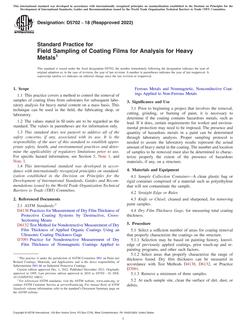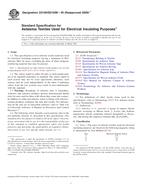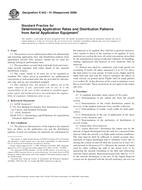1.1 This test method covers a procedure for quantifying the maximum flocculation ratio of the asphaltenes in the oil and the peptizing power of the oil medium, by an automatic instrument using an optical device.
1.2 This test method is applicable to atmospheric or vacuum distillation residues, thermally cracked residue, intermediate and finished residual fuel oils, containing at least 1 mass % asphaltenes. This test method has not been developed for asphalts.
Note 1 – An optical probe detects the formation of flocculated asphaltenes. The start of flocculation is interpreted when a significant and sustained increase in rate-of-change of signal, as measured by the optical probe, ensures flocculation is in progress. The start of flocculation can be detected unambiguously when the sample contains at least 1 % mass asphaltenes as measured by Test Method D 6560.
Note 2 – This test method is applicable to products typical of Specification D 396–Grades 5L, 5H, and 6, and Specification D 2880–Grades 3-GT and 4-GT.
1.3 This test method was evaluated in an interlaboratory study in the nominal range of 32 to 76 for the maximum flocculation ratio and in the nominal range of 36 to 95 for peptizing power.
Note 3 – The nominal range is determined by (min. sample mean–Reproducibility) to (max. sample mean + Reproducibility).
1.4 The values stated in SI units are to be regarded as standard. No other units of measurement are included in this standard.
1.5 This standard does not purport to address all of the safety concerns, if any, associated with its use. It is the responsibility of the user of this standard to establish appropriate safety and health practices and determine the applicability of regulatory limitations prior to use.
Product Details
- Published:
- 06/01/2009
- Number of Pages:
- 12
- File Size:
- 1 file , 370 KB
- Redline File Size:
- 2 files , 700 KB


